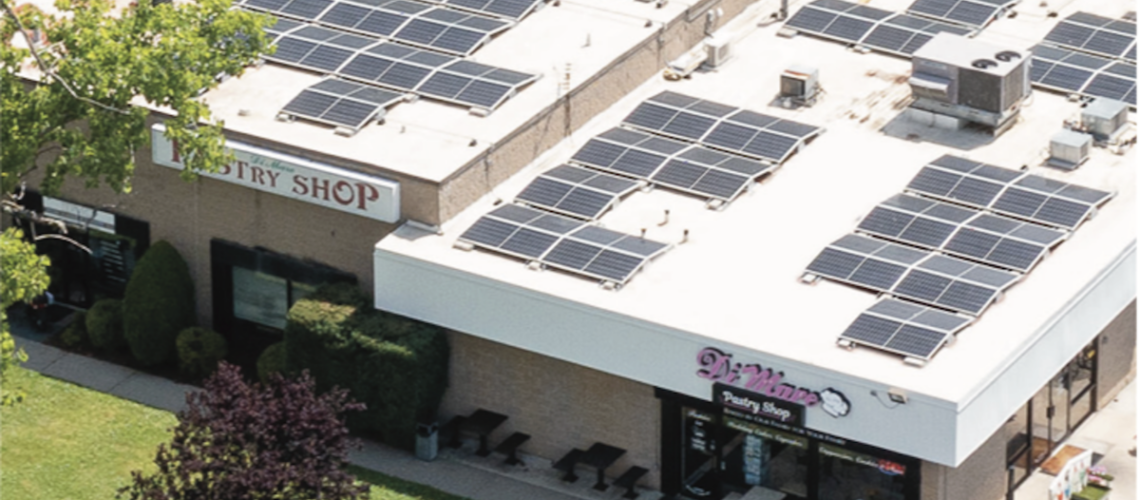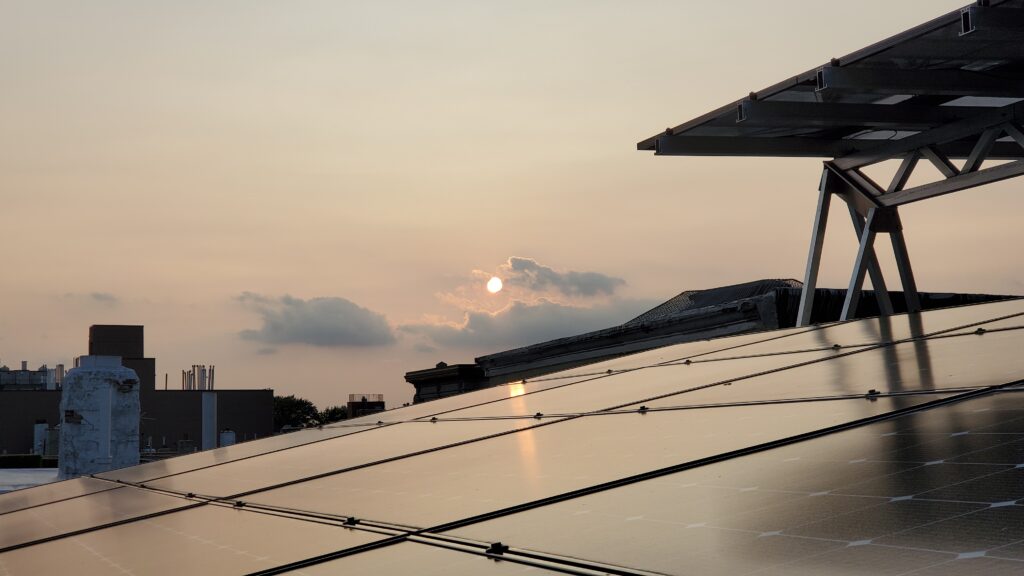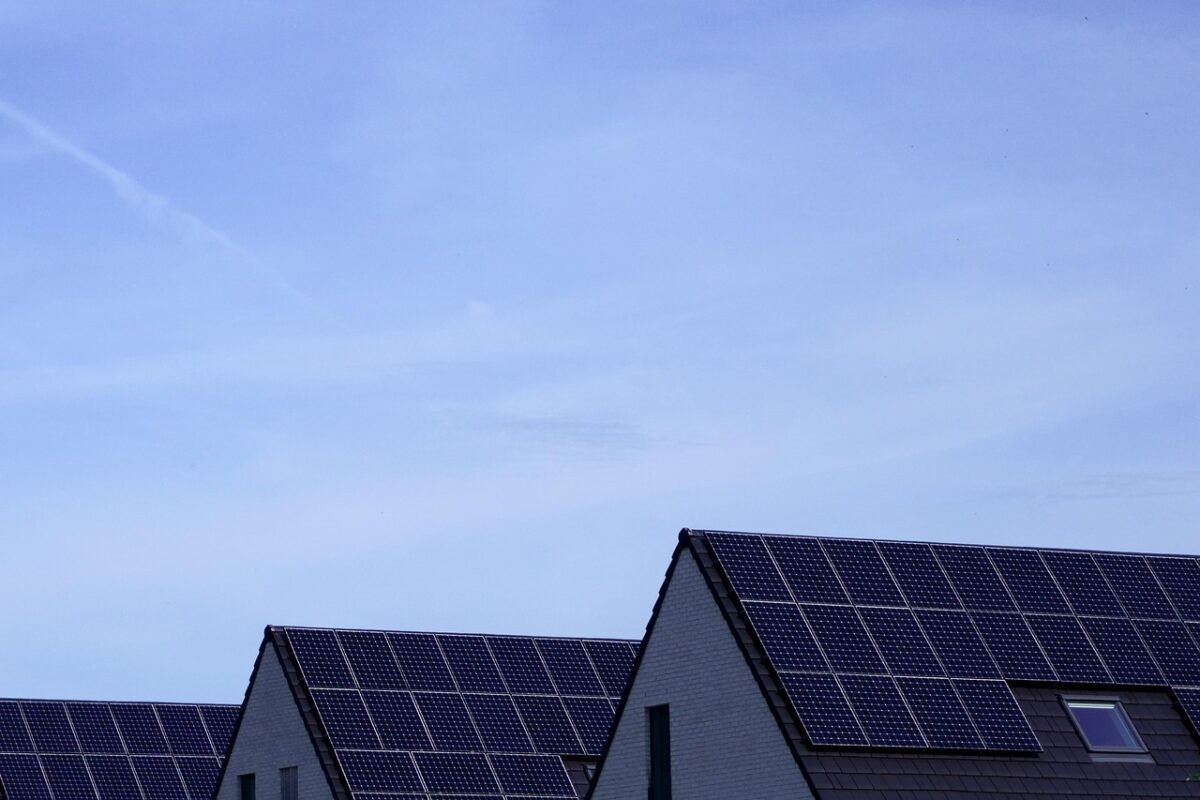The funds will help facilitate the development of renewable energy infrastructure for municipalities, the commercial sector and the state.
The Connecticut Green Bank, a financial institution that is accelerating the green economy in Connecticut and striving to reduces the energy cost burden of commercial and private consumers, has doubled the amount of funds it will allocate toward the growth of commercial solar projects for businesses, towns, schools, nonprofits, and state agencies.
Up from $49.5 million in 2020, the fund now has $110 million to meet the growing number of commercial, municipal and state solar projects geared at reducing energy costs and leveraging Inflation Reduction Act credits.
In January 2022, the Public Utilities Regulatory Authority launched Energy Storage Solutions,. aA program that incentivizes Eversource and UI customers to install energy storage systems at their homes or businesses. CT Green Bank helped to finance the scheme’s declining-block upfront incentive, which reduces installation costs by a reported $200 per kWh of battery capacity, up to $7,500 for each customer.
Since its launch, the Energy Storage Solutions program has initiated 21 residential, one commercial and one industrial project. Connecticut Green Bank states that an additional 109 proposed storage installations have applied to the program; 76 are residential and 33 are commercial and industrial. If approved, a total of 172,011 kWh of energy capacity will be added to the state’s renewable energy portfolio.
CT Green Bank has also helped to finance the state’s Residential Solar Investment Program (RSIP). RSIP provides partial refunds and incentives to reduce homeowners’ rooftop solar costs. Once installed, utilities under Master Purchase Agreements with CT Green Bank buy Solar Home Renewable Energy Credits (REC) per its program’s policy. Green Bank’s REC sales revenue generates green bonds leveraged by individual and institutional buyers. The RECs and green bonds generate financing to support RSIP incentives and cover administrative costs.
Connecticut’s RSIP has allowed 46,000 households – 50% of which are in vulnerable communities – to install rooftop solar panels. CT Green Bank states the program has generated more than $1.4 billion of public and private investment, including $160 million of ratepayer incentives, averaging at $30 per REC sale. RISP also helped generate more than 16,000 clean energy jobs across the state.
CT Green Bank states that $50 million of the increased funding will go to solar projects at businesses, towns and schools. Bert Hunter, the executive vice president and chief investment officer at Connecticut Green Bank, says each is looking to reduce energy costs and increase resiliency to grid outages. At 0.28¢ per kWh, Connecticut has some of the highest electricity rates in the country, 46% higher than the national average, according to clean energy solutions platform EnergySage.
CT Green Bank’s board also approved allocating more funds toward state projects facilitated by CT Green Bank’s Solar Marketplace Assistance Program. The platform helps state properties and municipalities navigate the process of going solar. Up from $20 million, the fund now has $60 million intended to support the development of 26 projects with a combined capacity of 17 MW.
The green bank states that most of these projects will provide solar for the Department of Corrections, Department of Transportation, Department of Energy and Environmental Protection, and the CT Technical Education and Career System. The CTECS development will offer students the opportunity to shadow various workers.
The Connecticut Green Bank leverages a public-private financing model for its investments. The institution pools limited public dollars to create long-term solutions later financed by the private sector, helping scale clean energy projects across the state. CT Green Bank states it has attracted $2.06 billion in private investments using $362.7 million of its money. The institution has added almost $2.5 billion to the state’s green economy, with 40% allocated toward programs supporting moderate and low-income community members.






